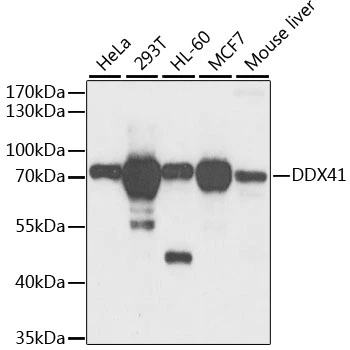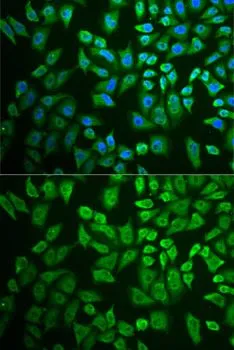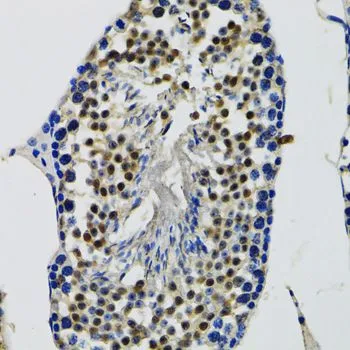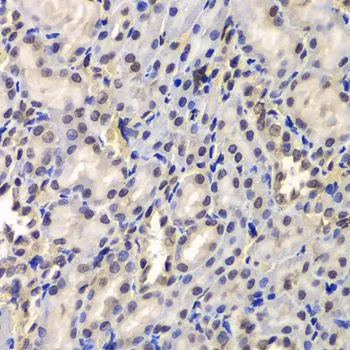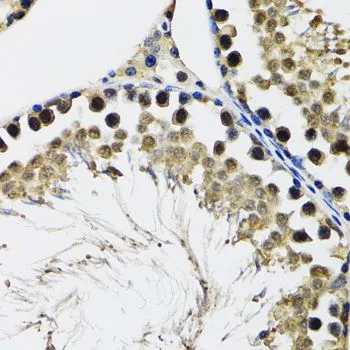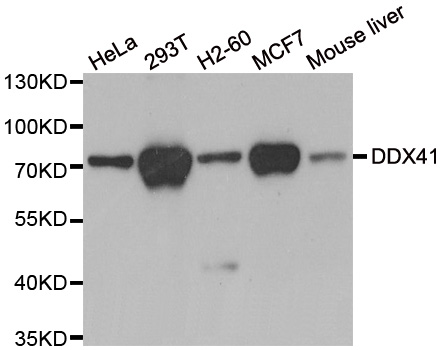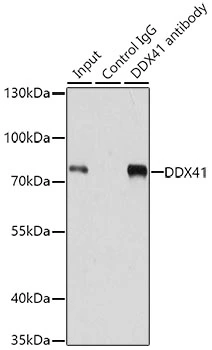
IP analysis of 293T cell lysate using GTX33151 DDX41 antibody. Antibody amount : 1microg / 200microg lysate Dilution : 1:1000
DDX41 antibody
GTX33151
ApplicationsImmunoFluorescence, ImmunoPrecipitation, Western Blot, ImmunoCytoChemistry, ImmunoHistoChemistry, ImmunoHistoChemistry Paraffin
Product group Antibodies
TargetDDX41
Overview
- SupplierGeneTex
- Product NameDDX41 antibody
- Delivery Days Customer9
- Application Supplier NoteWB: 1:500 - 1:2000. ICC/IF: 1:50 - 1:100. IHC-P: 1:50 - 1:200. IP: 1:50 - 1:200. *Optimal dilutions/concentrations should be determined by the researcher.Not tested in other applications.
- ApplicationsImmunoFluorescence, ImmunoPrecipitation, Western Blot, ImmunoCytoChemistry, ImmunoHistoChemistry, ImmunoHistoChemistry Paraffin
- CertificationResearch Use Only
- ClonalityPolyclonal
- ConjugateUnconjugated
- Gene ID51428
- Target nameDDX41
- Target descriptionDEAD-box helicase 41
- Target synonymsABS, MPLPF, probable ATP-dependent RNA helicase DDX41, Abstrakt, DEAD (Asp-Glu-Ala-Asp) box polypeptide 41, DEAD box protein 41, DEAD box protein abstrakt homolog, DEAD-box protein abstrakt, putative RNA helicase
- HostRabbit
- IsotypeIgG
- Protein IDQ9UJV9
- Protein NameProbable ATP-dependent RNA helicase DDX41
- Scientific DescriptionDEAD box proteins, characterized by the conserved motif Asp-Glu-Ala-Asp (DEAD), are putative RNA helicases. They are implicated in a number of cellular processes involving alteration of RNA secondary structure, such as translation initiation, nuclear and mitochondrial splicing, and ribosome and spliceosome assembly. Based on their distribution patterns, some members of the DEAD box protein family are believed to be involved in embryogenesis, spermatogenesis, and cellular growth and division. The protein encoded by this gene is a member of the DEAD box protein family and interacts with several spliceosomal proteins. In addition, the encoded protein may recognize the bacterial second messengers cyclic di-GMP and cyclic di-AMP, resulting in the induction of genes involved in the innate immune response. [provided by RefSeq, Jan 2017]
- Storage Instruction-20°C or -80°C,2°C to 8°C
- UNSPSC12352203

